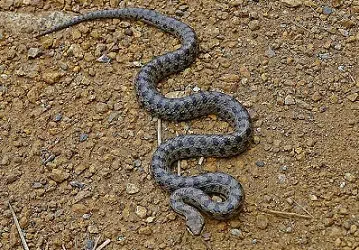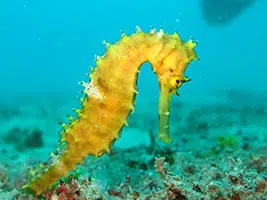 Ovovivíparo is a term derived from two Latin words: ovum (which can be translated as “egg” ) and vivipărus (which means “viviparous” ). The concept is used to refer to the oviparous animal that keeps its eggs in the body for a time and only expels them when the development of the embryo is very advanced or completed .
Ovovivíparo is a term derived from two Latin words: ovum (which can be translated as “egg” ) and vivipărus (which means “viviparous” ). The concept is used to refer to the oviparous animal that keeps its eggs in the body for a time and only expels them when the development of the embryo is very advanced or completed .
It should be noted that oviparous species are those that lay eggs. In this way, their embryos grow inside these structures. In the particular case of ovoviviparous animals, the eggs are stored in the female's body until the embryo is almost fully developed.
Therefore, in ovoviviparous animals, hatching (the breaking of the egg envelope so that the animal can come out) occurs immediately after laying or even before giving birth. Adders and sharks , for example, are ovoviviparous.
It is often said that, due to their characteristics, ovoviviparous animals are a combination of oviparous animals (which lay eggs) and viviparous animals (whose young grow in the womb of the female). In ovoviviparous animals, both fertilization and embryo growth are internal, although development takes place inside the egg.
In some species, hatching occurs after the egg is expelled. The female, in this framework, is dedicated to caring for the offspring until the specimen can fend for itself. There are also ovoviviparous species in which hatching takes place directly in the female's womb, with which the offspring leaves the mother's body prepared for its adaptation to the outside world.
Below we will see more examples of ovoviviparous animals and some of their most curious characteristics . Let's start with the seahorse , which is sometimes referred to as the hippocampus . One of its peculiarities is that the egg in which it is incubated is kept inside by its father , and not by its mother. This occurs because the mother transfers a series of eggs during fertilization.
 Therefore, the male seahorse incubates the eggs in a bag until they complete their development and the time comes for them to hatch and the young to emerge. As if this were not enough, despite what we usually think, these animals are not found in the group of crustaceans, but are considered fish . One of their most fascinating physical characteristics is that they can blend in, changing color so that predators confuse them with their surroundings.
Therefore, the male seahorse incubates the eggs in a bag until they complete their development and the time comes for them to hatch and the young to emerge. As if this were not enough, despite what we usually think, these animals are not found in the group of crustaceans, but are considered fish . One of their most fascinating physical characteristics is that they can blend in, changing color so that predators confuse them with their surroundings.
Another animal included in the list of ovoviviparous that stands out for its appearance is the platypus , a mammal that, against all odds, has a beak similar to that of ducks and lives in water. It is native to Australia and nearby regions. So strange is it that the first people in the West to see it thought it was a joke, that it was a beaver that had been fitted with an artificial beak. The thing is that in addition to all the above, it has a poisonous spur, something extremely rare in a mammal.
The most striking curiosity in this case is that it is not an ovoviviparous animal, because its eggs do not hatch as soon as it lays them but rather spend around two weeks outside its body. The mother must incubate them during this period, in a nest that she previously prepares.
The lución is an ovoviviparous animal, but it stands out for being a lizard that does not grow legs, so its appearance is that of a snake. Additionally, it prefers humidity and darkness to sunlight.
